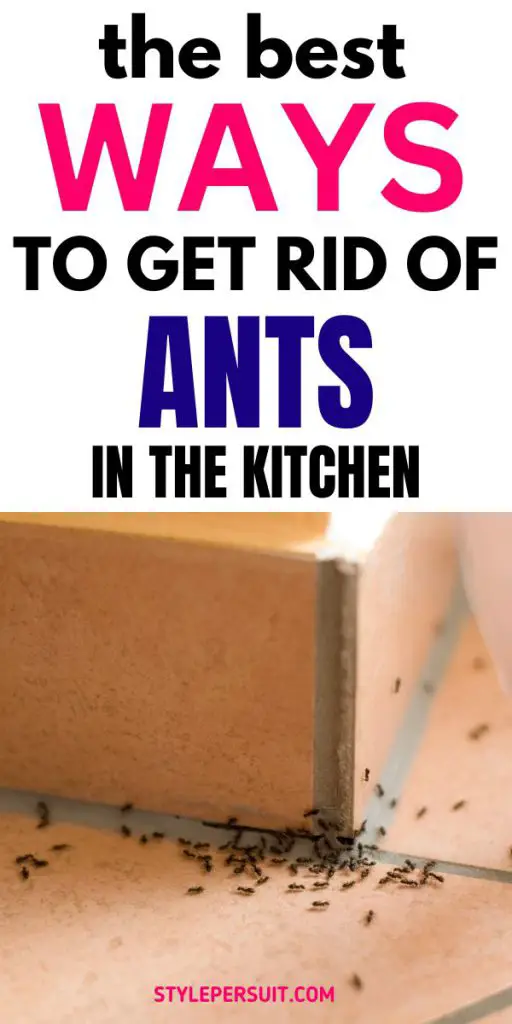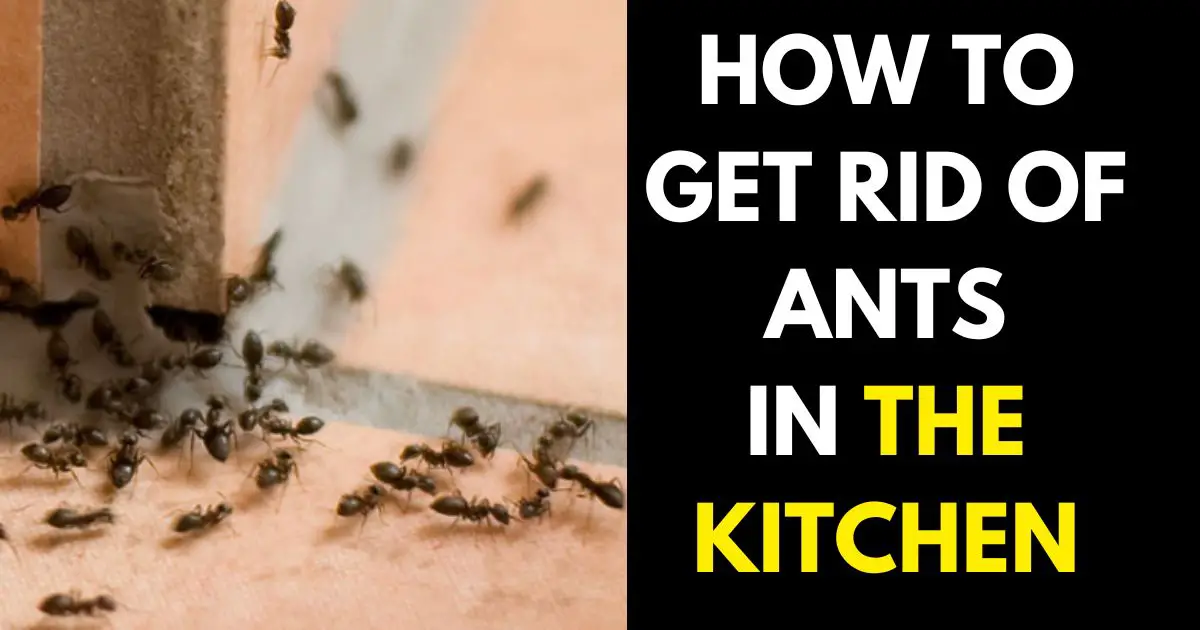Ants are a common problem in Brisbane due to its hot and humid weather. These small insects can cause a lot of damage to homes, including wooden structures. In the kitchen, they can contaminate food and their bites can be painful. There are various types of ants in Queensland, so it’s helpful to identify which type you’re dealing with. The good news is you don’t necessarily need to use chemicals to get rid of ants.
There are natural homemade remedies you can use to tackle these pests in your kitchen or anywhere else in your home.
Why Do I Have Ants in My Kitchen?
The main reason ants are in your kitchen is because they’re attracted to food. Among the many ant species out there, the ones you often find in kitchens include pharaoh ants, pavement ants, odorous house ants, thief ants, and Argentine ants.
These ants are drawn to sugary foods like honey and syrup. They also need water, which they can often find around sinks.
Ants leave behind scent trails to help them find their way to food and water. This means that if you see one or two ants, there’s likely more following the scent trail.
They communicate with each other using scent chemicals called pheromones, which guide them to food sources. That’s why you might see ants moving in lines. Knowing this behavior helps you locate where they’re coming from and how to get rid of them.
Occasionally, you might encounter carpenter ants in your kitchen. These larger ants are blackish-red and can damage your home by burrowing into wood.
If you notice piles of sawdust or wood shavings, they might be nesting nearby. In such cases, it’s best to call professionals right away to deal with the issue.
How to Recognize Different Ants
| Types of Ants | Color | Size and Shape | Common Region |
|---|---|---|---|
| Odorous House Ant | Black or dark-brown | ⅛” to ¼” long; oval shaped | Throughout the United States |
| Little Black Ant | Jet black | ⅛” long; two-segmented, oval-shaped waist | Throughout the U.S., especially in the eastern region, San Francisco Bay Area, and Southern California |
| Pavement Ant | Black or dark-brown | 1/12” to 1/16” long; two-segmented, oval-shaped waist | Throughout the U.S., especially in the Midwest |
What Do Ant Droppings Look Like?
Most ants are tidy creatures and have specific areas in their nests for waste, so you usually won’t find ant droppings around your home. If you do spot them, they appear as small brown or black marks or patches.
Carpenter ants, though less common in kitchens, leave droppings that look like piles of fibrous material, similar to sawdust or wood shavings.
Where Ants Are Commonly Found
Ants you often find in your kitchen are spread throughout the United States, such as the odorous house ant. However, some types have specific preferences for certain areas.
For instance, pharaoh ants are present in all states but thrive more in the warmer climates of the Southern United States. Little black ants are also widespread across the U.S., but they’re particularly abundant in the eastern regions, Southern California, and the San Francisco Bay Area.
Certain species, like the Argentine ant and fire ant, are more selective in their habitats. Argentine ants are mainly concentrated in California, Oregon, Washington, Arizona, Illinois, Maryland, Missouri, and Texas. Fire ants are predominantly found in Texas, Arkansas, Oklahoma, Alabama, Mississippi, South Carolina, Tennessee, and Florida.
Types of Ants Found in North America
Ants are everywhere, and North America alone has over 1,000 different types. But only a few of these are commonly responsible for infestations in homes.
Here are some of the ants you might find in your kitchen:
– Odorous House Ants: Small, black or dark brown ants that smell like rotten coconuts when crushed.
– Little Black Ants: Tiny ants, about 1/16” long, that are jet black.
– Pavement Ants: About ⅛” long, they come in black or dark brown with shiny bodies.
– Pharaoh Ants: These are 1/16” long, light yellow or red, and got their name from a mistaken belief that they caused one of the plagues in ancient Egypt.
– Carpenter Ants: One of the largest, averaging ⅝” long. They can be black, red, or a mix of both.
– Argentine Ants: These invasive ants are light to dark brown, about 1/16” long, and smell musty when crushed.
– Crazy Ants: They have reddish-brown bodies and are about ⅛” long. They’re called “crazy ants” because of their erratic movements.
– Fire Ants: These ants are crimson-colored, ranging from ⅛ to ¼” long. They deliver painful stings that can cause allergic reactions, although they’re rarely lethal.
Depending on where you live, you might also encounter fire ants, pharaoh ants, and crazy ants in addition to the ones listed above.
Signs You Have an Ant Infestation
Spotting ants in your kitchen now and then isn’t usually a big deal, but it could mean there’s a nest nearby with many more ants. These might be scout ants looking for food, and once they find it, they’ll call in the worker ants.
Other signs include:
– Ant Trails: After finding food, scout ants leave a scent trail for other ants to follow. You might see a line of ants moving towards a food source.
– Dirt Mounds: Many ants nest outdoors and make small dirt mounds with a hole in the center. If you see these mounds, especially with ants going in and out, they might soon invade your home.
– Wood Shavings: Carpenter ants leave behind piles of wood shavings when they tunnel into wood. If you find sawdust-like shavings around wooden areas, you might have carpenter ants.
Damage Ants Can Cause to Your Home
An ant infestation isn’t just annoying; it can also pose health risks and damage your property.
Ants can carry bacteria and fungi that contaminate food. Pharaoh ants, for example, can spread Salmonella, Clostridium, Streptococcus, and Staphylococcus. Even if common ants like little black ants or odorous ants are less likely to spread these pathogens, it’s still a good idea to discard food that ants have touched.
Carpenter ants can cause significant damage to your home’s structure if left unchecked, similar to termites. While not as destructive, crazy ants can nest in electrical equipment and damage wires by chewing through them.
How to Get Rid of Ants
No matter what kind of ant you’re dealing with, you can try these methods to get rid of them:
1. Diatomaceous Earth
This is a powder made from fossilized algae and diatoms. It works by dehydrating ants when it pierces their exoskeletons.
Sprinkle food-grade diatomaceous earth along ant trails, entry points, and inside your home. It’s safe for humans and pets but deadly to ants.
2. Homemade Ant Bait
Make a mixture of 4 tablespoons of peanut butter, 6 tablespoons of honey, and ¾ teaspoon of boric acid (found in Borax).
Spread this bait along ant trails and entry points. Boric acid is poisonous to ants and, when mixed with honey and peanut butter, it attracts them.
They’ll carry it back to their nest, killing the whole colony. If you have pets or kids, put the bait in a container with holes for ants to enter.
3. Eliminate Ant Trails
To get rid of the scent trails ants use to navigate, mix equal parts white vinegar and water in a spray bottle.
Spray the ant trail and wipe it up with a paper towel. The vinegar scent acts as a deterrent, but it only lasts a couple of days.
These methods work for most ants, but if you’re dealing with carpenter ants that can damage your home’s structure, it’s best to call a professional pest control company for help.
Professional Ant Control Services
Two well-known pest control companies are Terminix and Orkin. They both have years of experience, great customer reviews, and offer thorough ant control packages.
These packages usually include an initial inspection, treatment for the ant problem, preventive measures, and follow-up visits.
Types of Treatments
Pest control companies use various treatments based on the ant type and the extent of the infestation. Here are some common ones:
– Hydramethylnon: Like boric acid, this takes a few days to work. Ants carry it back to their nest, killing the whole colony.
– Pyrethroids (e.g., deltamethrin, permethrin, bifenthrin): These attack ants’ nervous systems, causing paralysis and death. They can be sprayed directly on nests or around your home to create a repellent barrier.
– Piperonyl Butoxide: This isn’t a poison on its own but makes other pesticides more effective. It speeds up how quickly ants are affected by the pesticide.
Cost of Professional Ant Control
Both Orkin and Terminix offer monthly plans and one-time treatments. The cost depends on factors like the severity of the infestation and your home’s size.
For Orkin, monthly plans typically cost between $50 and $99, while one-time treatments range from $135 to $400. For Terminix, monthly plans are usually $40 to $55, and individual treatments range from $130 to $300.
Both companies charge for an initial inspection and treatment before starting monthly services. Terminix’s initial cost is around $100, and Orkin’s is about $200.
How to Keep Ants Away
After you’ve cleared out the ants, follow these steps to keep them from coming back:
– Keep it Clean: Clean up spills right away and don’t let dirty dishes pile up. Also, keep your trash can lid closed.
– Store Food Right: Put sweet and protein-rich foods in airtight containers and keep them in the fridge or closed cabinets.
– Seal Entry Points: Check the seals around your doors and windows. Replace any damaged caulking or weather stripping, and consider adding a door sweep if there’s a gap under your door.
– Reduce Moisture: Ants like damp places, so use a dehumidifier in your kitchen to lower humidity levels.
Frequently Asked Questions (FAQs) about Ants
Why are there ants in my kitchen?
Ants usually come into your kitchen looking for food and water, which they take back to their outdoor nest.
What scents do ants dislike?
Ants don’t like the smell of vinegar, citrus fruits like lemons and limes, black and red pepper, cinnamon, peppermint, eucalyptus, melaleuca, and coffee.
How can I find where ants are coming from?
If you see a line of ants, follow it to find where they’re entering your home. Once you locate the entry point, seal it to stop them from coming back.
How long does vinegar repel ants?
Vinegar can keep ants away for about 4 to 48 hours. To make it more effective, spray vinegar on as many surfaces as you can since ants might just find a way around it.



